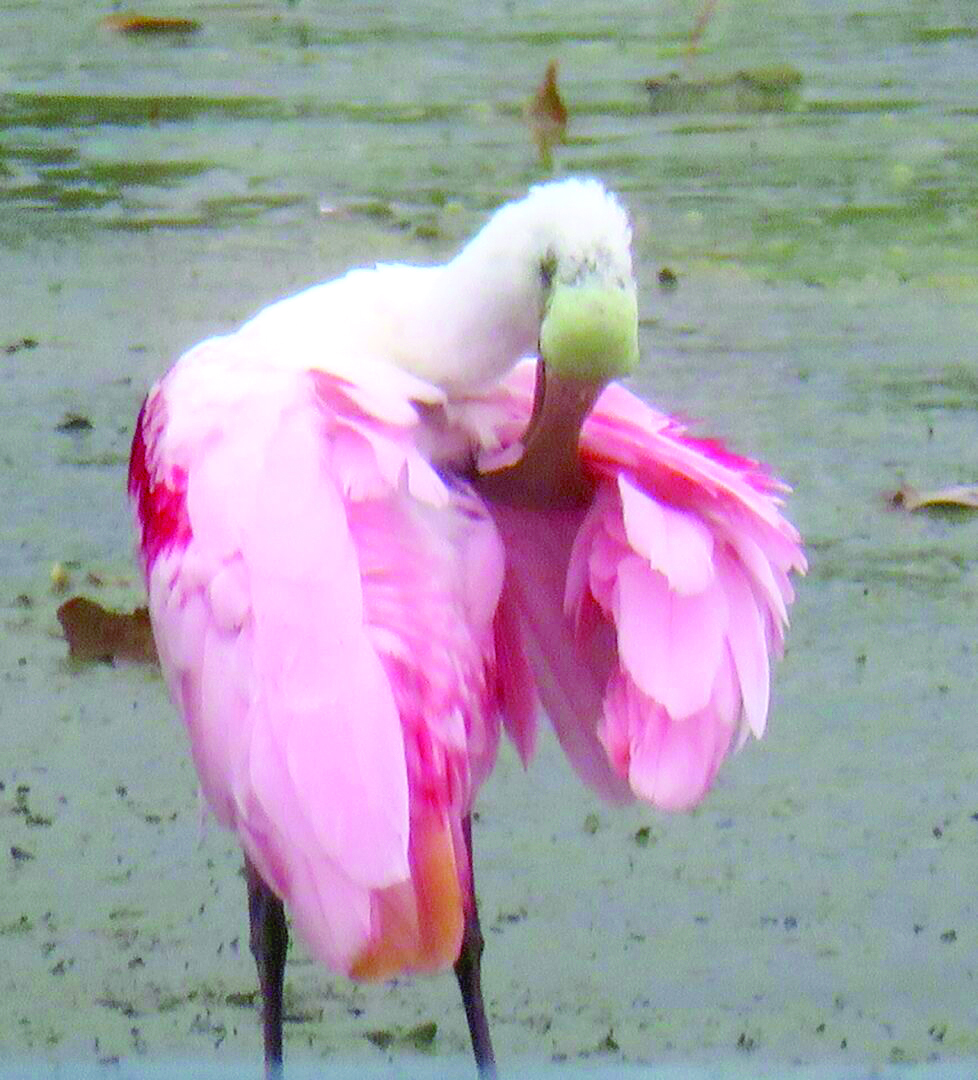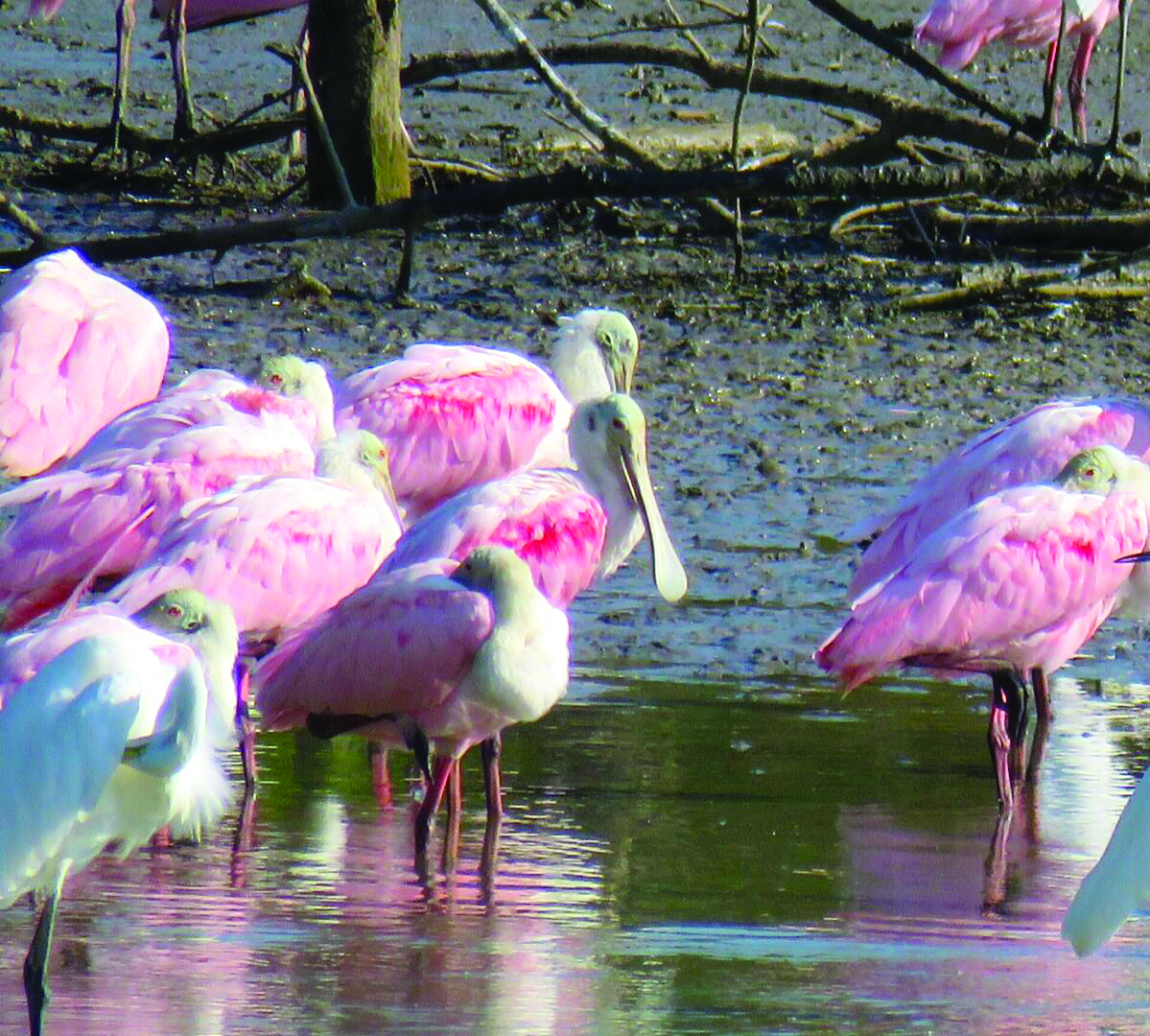Article by Bron Clear, PWLCTMN


The pink-feathered Roseate Spoonbills are special, and not found only in Florida or Galveston! We have them right here in East Texas in the shallow ponds and creeks along Lake Livingston. Some gather to migrate down to Central and South America for winter or fly back for summer. And some stay close by year around. They can be short or long-distance migrators.
These rosy birds have pink wings and legs, a brighter pink shoulder patch, and pink-red eyes. As they age, like humans, they bald and lose feathers on the tops of their heads leaving very pale green scalps! The life span is about 10+ years with the oldest recorded at 18 years old. Standing around 32” high with a wide wingspan of 50”, these are large wading birds. And, of course, they hunt using their long, funny spoon-like bill to scoop and dig meals out of shallow water muds.

Spoonbills are social birds, and often flock, feed and nest with egrets, herons, ibis and other long-legged wading birds. This gives them safety in numbers from predators like bobcats and coyotes!

Although unrelated to Flamingos, spoonbills are pink in color for the same reason. They metabolize the red-orange carotenoid pigments from the foods they eat, and it is then absorbed and deposited into their feathers, legs and eyes. The more they eat carotenoid-rich crustations like crawfish or shrimp, the pinker they become! A great example of “You Are What You Eat”. Young spoonbill chicks start out white, but as their parents feed them crustaceans, they become more and more pink.

Sadly, in the 1800’s spoonbills were hunted almost to extinction for their glorious feathers. Women liked pink feathers on their fashionable hats and capes. However, this changed for beautiful birds when conservationists rallied, and laws were passed to protect them. Thankfully, then the Migratory Bird Treaty Act of 1918 made it illegal to hunt, capture, trade or harm all native bird species.


